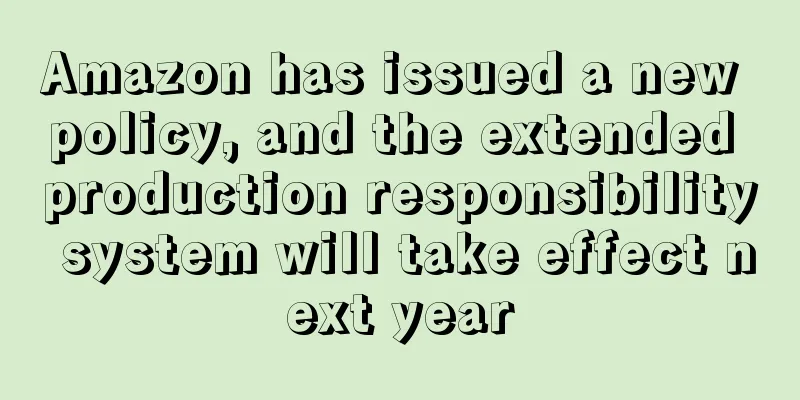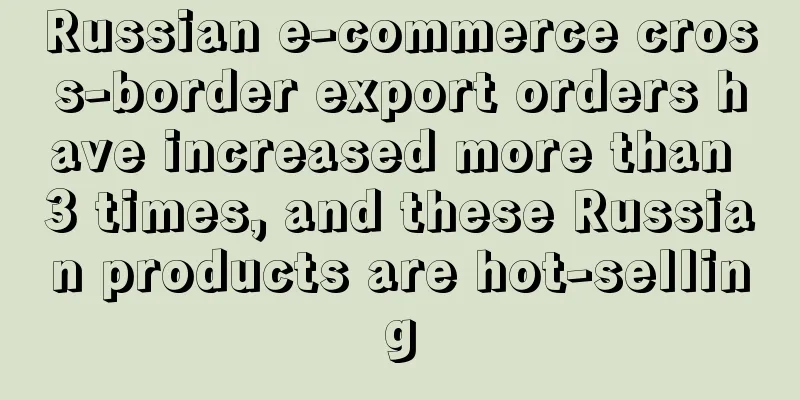Amazon has issued a new policy, and the extended production responsibility system will take effect next year

|
Recently, Amazon issued an announcement that it will implement the EPR policy next year . The EPR policy, namely Extended Producer's Responsibility, is an important environmental policy. The policy extends the producer's responsibility to the entire life cycle of its products, especially the recycling and reuse stage after product consumption.
That is to say, from 2020, the recycling of post-consumer waste will be managed through the Extended Producer Responsibility (EPR) system. According to Amazon's new policy, sellers must pay an "ecological contribution fee" to ensure that they fulfill their waste management responsibilities and obligations at the end of their product's service life.
In addition, Amazon emphasized that it will confirm whether the seller meets the requirements of the Extended Producer Responsibility (EPR) system in the country/region where the goods are sold . Therefore, Amazon will collect and verify the seller's EPR registration number. If the seller cannot prove to Amazon that it meets the requirements of EPR, Amazon will suspend the seller's non-compliant products published under the EPR product category.
According to policy requirements, sellers are required to provide the following information when registering for the Extended Producer Responsibility (EPR) : business license, store information, product information, product sales quantity, and a scanned copy of the VAT number.
The specific process of EPR registration is as follows : 1. According to the policy requirements of the Extended Producer Responsibility (EPR) system , products are divided into different categories. Amazon sellers need to clarify the product categories for EPR registration and then register with different recycling agencies.
2. Sellers need to calculate the specific recycling volume to be declared. Recycling volume = the number of products sold by the store under the EPR category in that year / weight
3. Provide EPR information and logos to consumers , and sellers need to affix relevant information or marks on the products. There are three common logos: print the trash can logo on the electronic and electrical products and packaging sold, print the recycling registration number on the sales invoice, and mark the French packaging recycling company logo on the packaging box.
4. Submit the registration letter and registration number to the Amazon platform. After the seller receives the registration letter and registration number for each EPR product category, submit it to Amazon backend for review. Amazon New Deal EPR |
<<: India's holiday sales exceeded $2.7 billion in four days! Smartphones are the best-selling
>>: Etsy Announcement: Sellers can set different prices for their products
Recommend
China Express debuts in Paris, "China Home" joins hands with Cainiao to escort athletes to the competition
On July 23 , three days before the countdown to t...
What is DC Trans? DC Trans Review, Features
DC Trans is a cross-border service brand carefully...
What is Shadow Stone Review? Shadow Stone Review, Features
Yingshi Evaluation focuses on Instagram evaluatio...
Amazon Egypt is now online!
Amazon acquired Souq.com in 2017 and has been con...
Street fashion has become a new trend in Europe, and Zalando is adapting to the development to help sellers sell!
As the epidemic slows down, people start to retur...
Net profit increased 375 times in the first quarter, and the big seller is going to build a factory in the United States
Jiuan Medical's revenue in the first quarter ...
What is MailZone Overseas Postcard? MailZone Overseas Postcard Review, Features
MailZone Overseas Postcard is a direct mail automa...
What is Amazon Custom? Amazon Custom Review, Features
Amazon Custom means that sellers can provide buye...
eBay UK's hot-selling products for 2021 are released, with fashion categories making the most money
Under the influence of inflation , all kinds of p...
What is More4Motion? More4Motion Review, Features
More4Motion is a website that specializes in sell...
E-commerce in Southeast Asia is growing at an exponential rate
Online retail in Southeast Asia grew 85% year-on-...
Temu is "selling like crazy" abroad, driving PDD's revenue up
Its latest financial report shows that Pinduoduo&...
With $300,000 in funding, Egyptian fashion e-commerce company OPIO expands into the DTC market
Four years after its establishment, OPIO has fina...
The bell is about to ring, and another big seller is on the market!
After big sellers such as Zhiou Home Furnishing a...
Cainiao deepens the construction of its express delivery network in Spain, and the number of cross-border e-commerce orders grows strongly
The volume of cross-border e-commerce orders has ...









